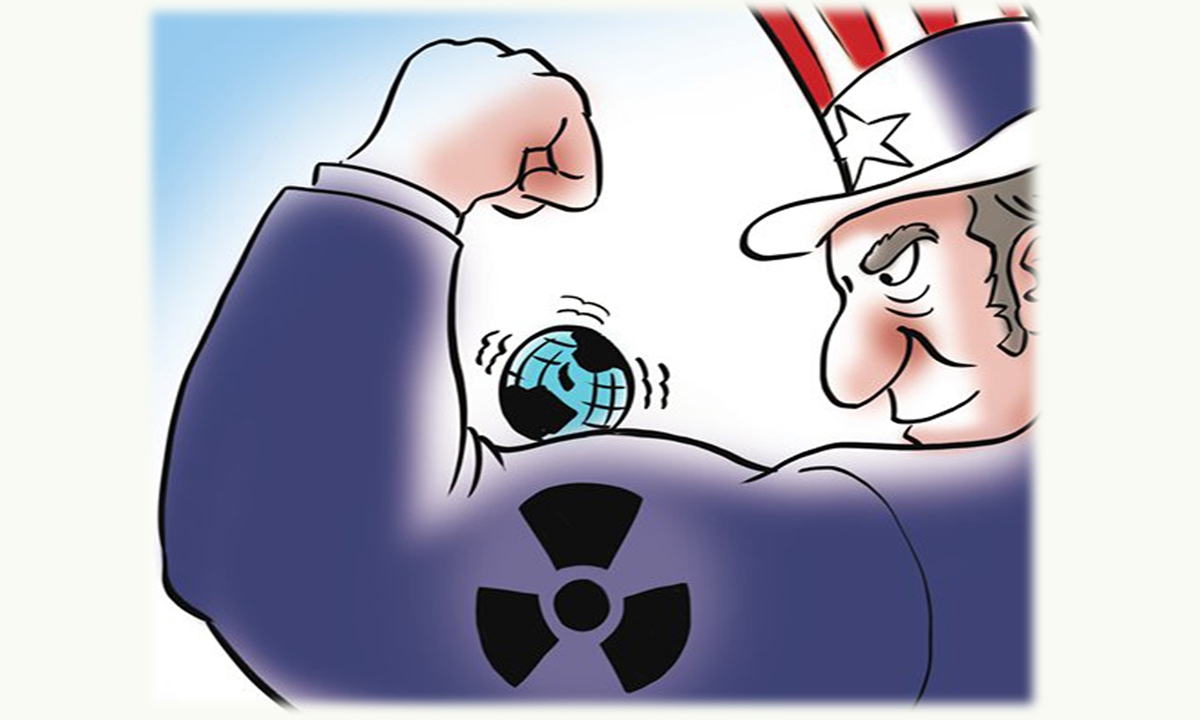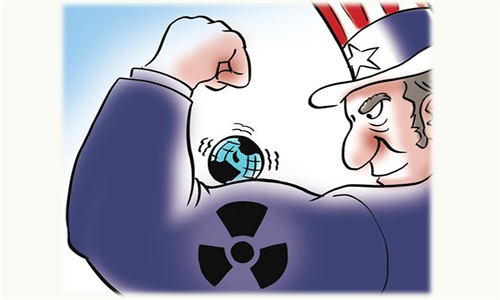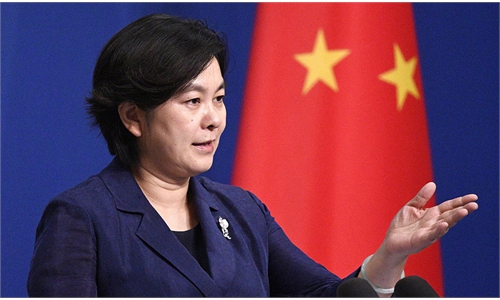
Illustration: Liu Rui/Global Times
The US State Department on Tuesday disclosed the number of nuclear weapons in the US stockpile, according to Associated Press (AP). The State Department said that the number of US nuclear weapons stood at 3,750 as of September 2020, including those in active status and in long-term storage. The number is down from 3,805 in 2019 and 3,785 in 2018.Disclosing the number of nuclear weapons is a reversal of the Trump administration's policy. One of the important reasons why the Biden administration disclosed this sensitive information now is that the US is making efforts to restart arms controls talks with Russia. During the process of negotiations, Washington needs to disclose the number and make it seem transparent.
The US is trying to leave the world an impression that it is reducing nuclear weapons. Another purpose of the US is to drag China into the negotiation of nuclear arms control with the US and Russia. By hyping China will "soon surpass Russia" as the US' "top nuclear threat," Washington has also tried to rope in Moscow to press China to join the negotiation. However, China has only a fraction of the number of nuclear warheads that the US has. It is not China that poses a so-called threat to the world, but the US nuclear weapons.
In fact, the number that Washington disclosed still lacks transparency. There is no worldwide verification mechanism to examine the exact number of nuclear weapons each country possesses. This means Washington can basically "disclose" whatever number it wants to.
According to Stockholm International Peace Research Institute (SIPRI), as of January 2021, the US had a total inventory of approximately 5,550 nuclear warheads, while China's number was 350. This is a huge gap. In addition to the 3,750 nuclear weapons that the US State Department disclosed, the US also has about 1,750 retired warheads awaiting dismantlement, according to SIPRI. Therefore, precisely speaking, the number 3,750 was not so true. It is also unlikely that Washington will dramatically reduce its number of nuclear weapons in the future.
On the one hand, the US has announced that the number of its nuclear weapons has decreased in recent years. Yet on the other hand, it is proliferating nuclear technology to other countries. AUKUS, a trilateral security partnership between the US, the UK and Australia, is an example. The US will share its nuclear submarine technology with Australia, a country that has neither nuclear weapons nor any nuclear power stations.
Upholding double standards, the US is precisely the initiator of global nuclear proliferation.
The US has another purpose: to replace old nuclear weapons with the new ones. To a great extent, the US' so-called declining number of nuclear weapons is because the country needs to eliminate old weapons, as the new ones are being developed. After its nuclear weapons are updated, the total inventory may not change too much.
For example, the US Navy is now developing the Columbia-class submarine. This is an upcoming class of nuclear submarines scheduled to enter service in 2031. And the US Air Force is developing the Northrop Grumman B-21 Raider, which is able to deliver conventional and thermonuclear weapons. All of these facts indicate that the US is strengthening its strategic nuclear force, and imposing serious threats to the whole world.
The number of US' nuclear warheads is enough to destroy all humanity. This being the case, the US should have taken the lead in reducing its nuclear weapons, instead of updating them. If the US wants to reach a good result with nuclear arms control negotiations and fulfill US President Joe Biden's stated desire to reduce the role of nuclear weapons in US policy, it must critically rethink its steps.
The author is a Chinese military expert and commentator. opinion@globaltimes.com.cn


